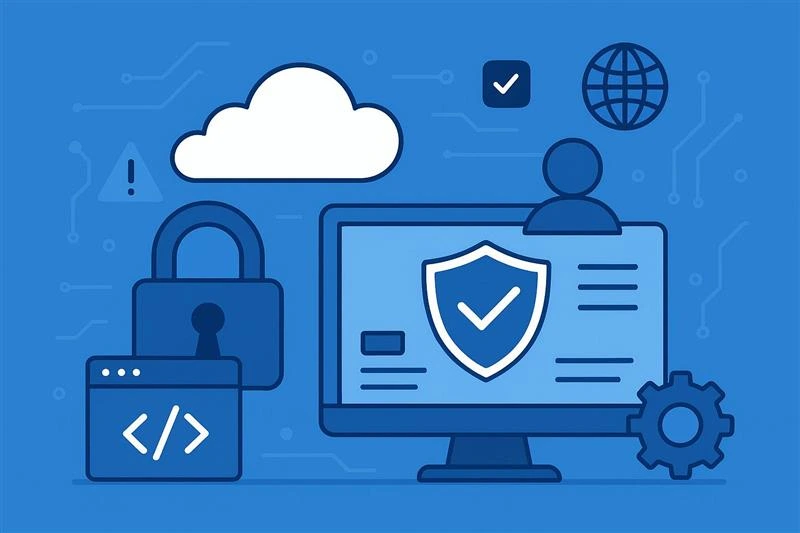Why Quality-Assurance Outsourcing Is Not Just Smart—It’s Strategic
21 Jul 2025Beyond Cost Savings
A testing team is good, but a dedicated quality assurance outsourcing team? That's even better! Why? Let's take a look. It's considered more cost-efficient to outsource QA testing than to do it in-house, as training or upskilling costs add up quickly. If your project goals look anything like faster release cycles, high-quality product, and product scaling testing with ease, then it's time to be strategic and use outsourced QA testing. We will be covering an array of points in the sections below.
What Does “Outsourcing QA” Actually Mean?
Outsourcing QA means hiring an external provider to handle part of or all of your software testing requirements. It can be anything from simple manual testing to a comprehensive test strategy, automation, and reporting. Project-based QA handles testing for a specific project, and managed QA teams are a dedicated group who provide ongoing support for your development pipeline. These testers can do manual or automated testing, depending on what you need.
5 Big Business Benefits (More Than Cutting Costs)
Faster Releases Without Sacrificing Quality
External QA teams are built for rapid execution, meaning more test coverage, in less time, with fewer bugs making it to production.
Instant Access to Specialized Testing Talent
From mobile apps to fintech platforms, QA partners offer niche skill sets and certifications your internal team might lack.
Round-the-Clock Test Cycles (Follow-the-Sun)
Global QA providers operate across time zones, enabling continuous testing even when your in-house team logs off.
Flexible Team Size as Projects Scale Up or Down
A major benefit of quality assurance outsourcing is the ability to quickly scale your team size up or down, based on project demands. No recruiting, no delays.
Fresh Eyes Catch Hidden Defects
Outsiders can spot issues internal teams miss—bringing unbiased, user-focused scrutiny to your product.
When QA Outsourcing Becomes a Strategic Differentiator
Outsourcing QA isn’t just a way to save money—it can also help your business succeed in a big way. When you work with a skilled QA team, your software gets tested faster and more carefully. This helps you find and fix problems early, so you can release your product sooner and with more confidence. That means you can beat your competitors to market and make a better impression on customers. A good QA partner also helps you meet important rules and standards, especially in areas like healthcare or finance. In the long run, quality assurance outsourcing helps you build trust, improve your product, and grow your business. It’s not just smart—it’s a smart strategy.
Common Myths—and the Real Truth
Myth: Outsourced QA is low quality.
Truth: Top vendors follow standards that are practiced globally and deliver consistent, high-quality results.
Myth: Only large companies benefit.
Truth: Startups often gain the most from a scalable QA team during their early stages of growth.
Myth: Outsourcing slows down collaboration.
Truth: The use of agile tools and dedicated QA leads ensures seamless integration with your workflows.
Myth: It’s just manual testing.
Truth: Leading firms specialize in test automation, performance testing, and security. All of these together are great assets to the market and your company.
4-Step Roadmap to Successful QA Outsourcing
To get the most out of quality assurance outsourcing, it’s important to follow a smart and simple plan:
-
Define goals and KPIs: Start by setting clear goals for your QA process. Track key metrics like how many bugs are found (defect rate) and how fast testing is completed (cycle time).
-
Pick the right vendor: Choose a QA partner with experience in your industry. Look for strong domain knowledge, good reviews, and important certifications like security standards.
-
Start with a pilot sprint: Test the partnership with a small project. This lets you see how the team works, communicates, and fits into your workflow.
-
Scale with automation and continuous feedback: As you grow, use automated testing to save time. Keep sharing feedback so the team improves and stays aligned with your goals.
Conclusion & Next Steps
Quality assurance outsourcing is more than just cost-effective—it’s a growth strategy. It helps you launch faster, scale with ease, and deliver higher-quality software. Ready to level up your QA? Schedule a Trawlii QA-readiness call and discover the benefits of outsourced QA with a trusted, scalable QA team built for long-term success.




